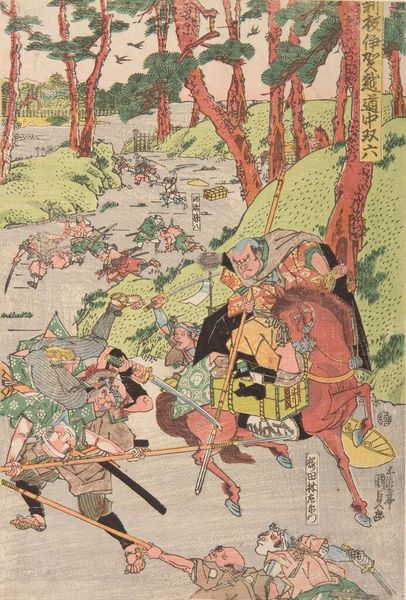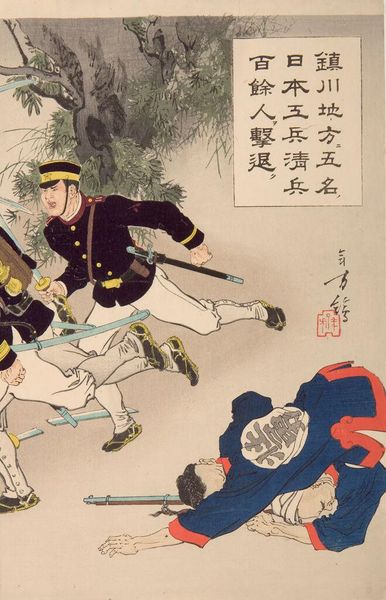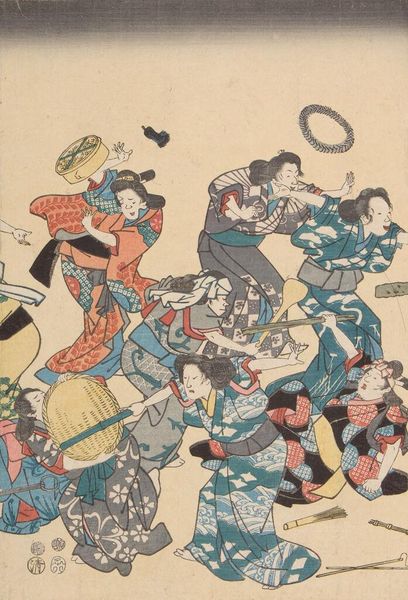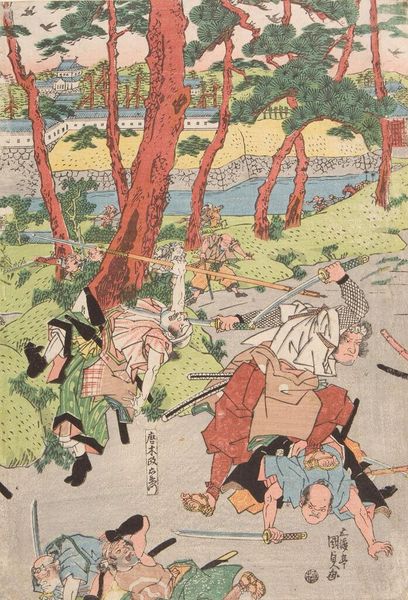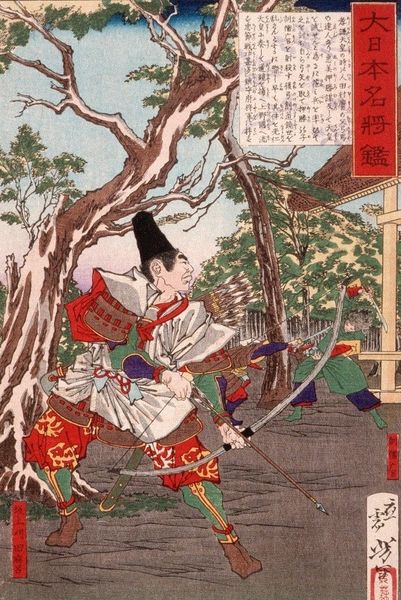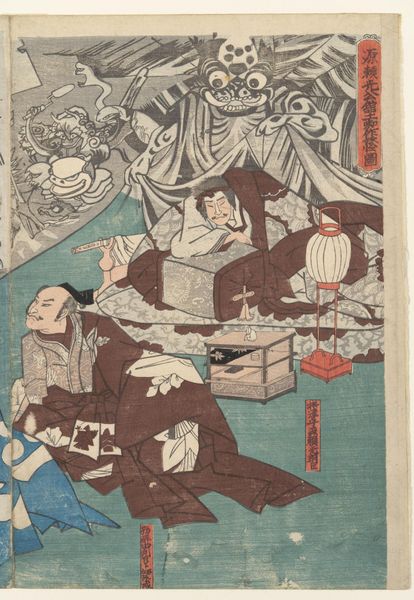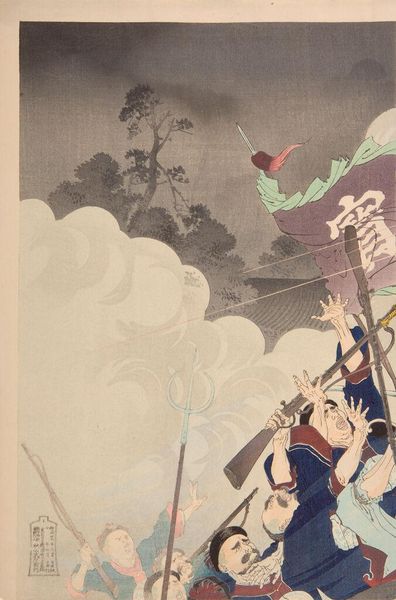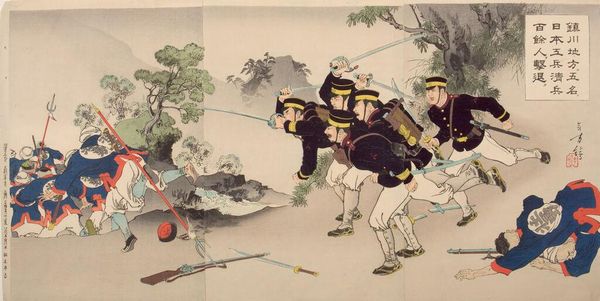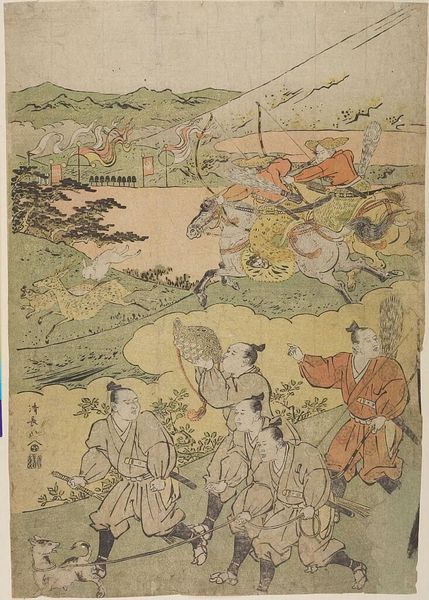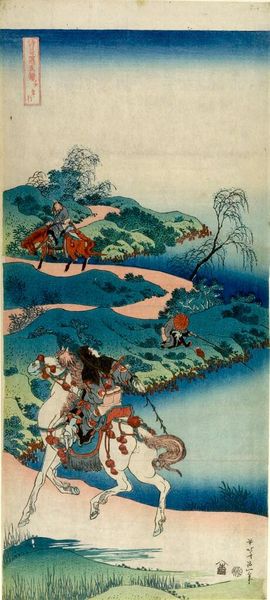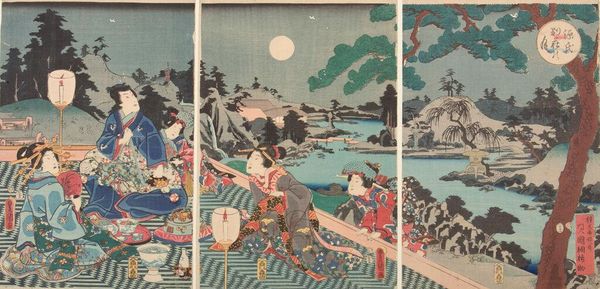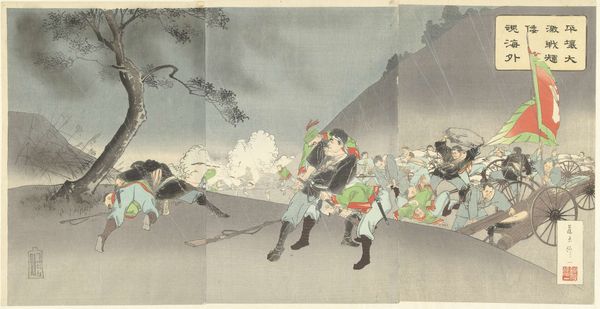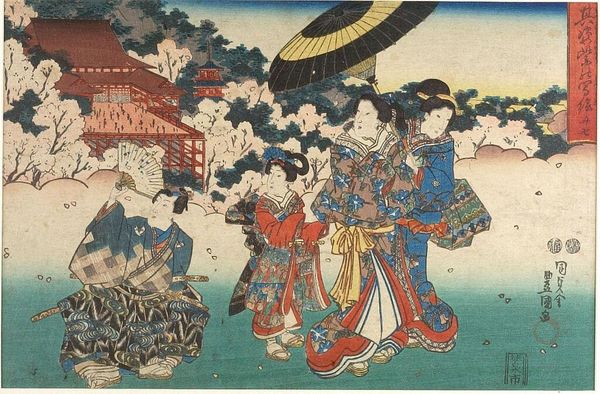
Flight (Chinsen chihÅ no go-mei no Nihon-kÅhei shin-hei hyaku-yo-nin o uchi shirizoku) Meiji period,
0:00
0:00
Dimensions: 37.2 x 25 cm (14 5/8 x 9 13/16 in.)
Copyright: CC0 1.0
Editor: This is "Flight" by Mizuno Toshikata, though undated, it's a striking woodblock print at the Harvard Art Museums. I'm immediately drawn to the chaos of the scene. What underlying narratives do you see embedded within this piece? Curator: Notice how Toshikata renders the fallen soldier with the upturned feet – a potent symbol across cultures of defeat, vulnerability, even a kind of offering. It's a powerful inversion of the warrior's strength. Where does this visual language originate, and how has it evolved over time? Editor: So the image taps into a deeper, almost universal understanding of defeat, even beyond its specific cultural context? Curator: Precisely. Visual symbols are never static; they accumulate meaning across generations, shaping how we perceive conflict, sacrifice, and even heroism. Consider how the seemingly simple act of falling carries such immense cultural weight. Editor: It’s incredible to think how much history and emotion can be packed into a single image. Thanks for pointing out what I had missed. Curator: It is by questioning what we see that we discover the true significance of the image.
Comments
No comments
Be the first to comment and join the conversation on the ultimate creative platform.
